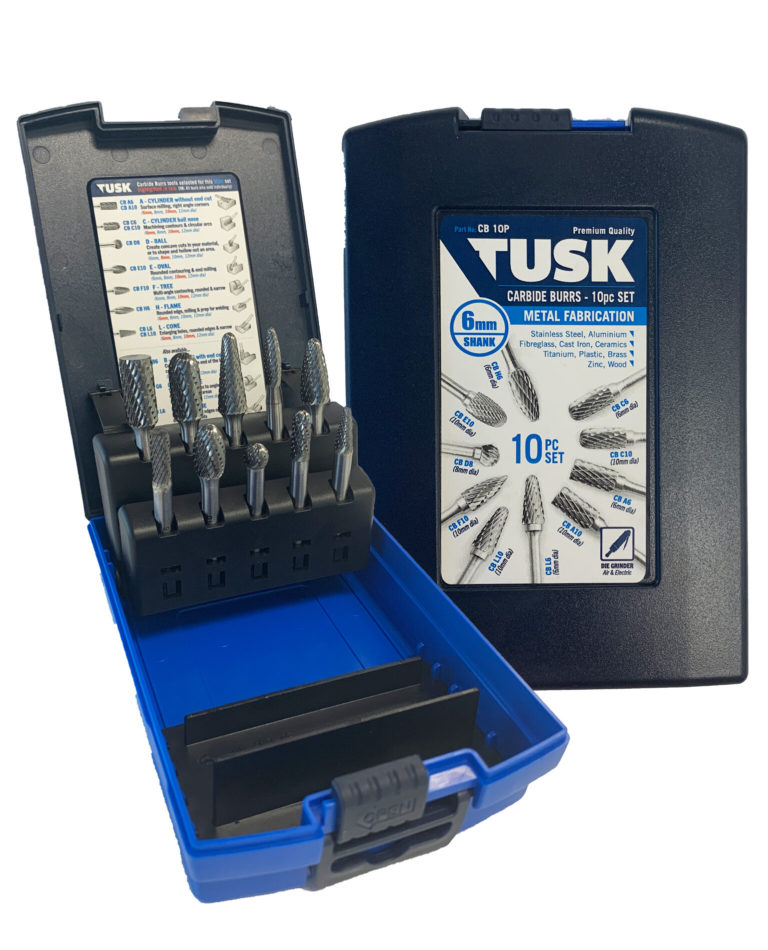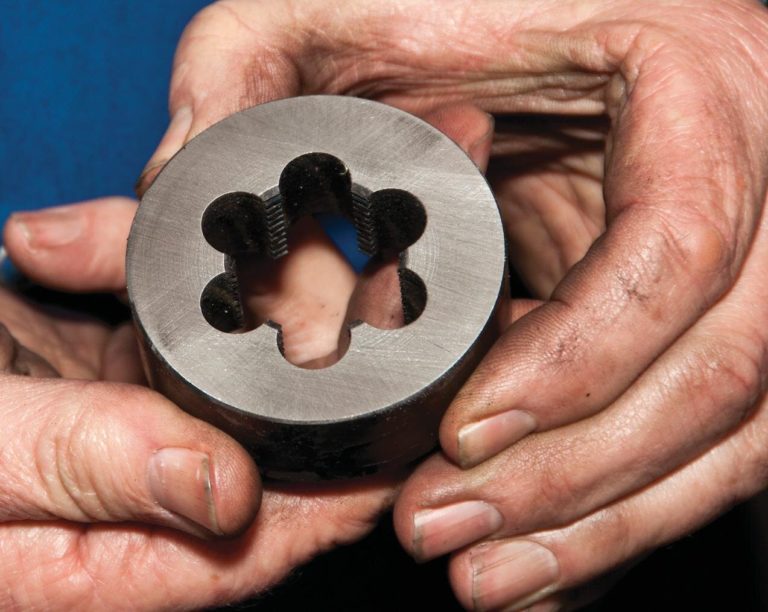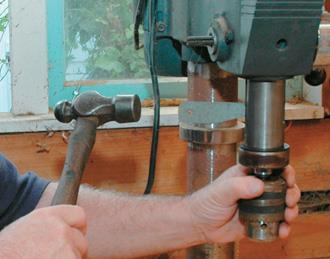Turning black and blue – how to achieve a black oxide finish
By Bob Hulme
Putting a durable finish on steel components is usually the last step in a project, but it is one which needs to be thought out at the beginning. The thickness of the coating may have to be allowed for when machining, holes may have to be incorporated to hang the part from during a finishing process, etc. The particular process we are looking at in this article does not effectively alter the dimensions of the part as it etches into the surface rather than deposits on top. Black oxide finish is sometimes called parkerizing and it is common on components such as gun barrels because it does not involve high enough temperatures to cause distortion and there is no dimensional change.
While strictly speaking not an anticorrosion coating on its own, it does perform well due to its microscopic porosity. The final step in the black oxide process is to wipe the part liberally with oil which soaks into those pores and tends to stay there even after the excess is wiped off. Just don’t put it in the dishwasher.
The Motivation
The inspiration for this article came from the need to put a black oxide finish on some components we were making for a major foundry. They are tools for fitting location dowels to casting boxes to ensure proper alignment. The dowel system is from the USA and quite good, but for one of the dowel sizes the fitting tools have a tendency to break too easily. We redesigned the tool to give better strength and made them from a high tensile steel which was then nitrided to give a hard surface.
The customer was keen to have a black oxide finish on them, but I was dubious about how this would go over the nitride surface. When I put the question to a local company that specialises in these types of finishes, they didn’t know the answer, so I decided to give it a go myself. At least I could control the process and just do one on its own first as a trial. As you can see, it turned out fine. The only issue is that the cross pin made from silver steel did not take the etch as readily as the body of the tool so is a bit lighter in colour.
The end result—a classy, darkened finish.
Preparation
The part must be completely free from any oiliness or greasiness, if I can put it that way. Cleanliness is absolutely vital. I have a small (well, quite tiny) sand blasting gun which is great for small parts like these. Unfortunately it still makes a lot of mess and the sand goes everywhere despite trying to contain it using a plastic fish bin. Do the grit blasting as close to the time you are going to treat the part to avoid any surface rust starting. I used a fine grit. In hindsight, a medium grade would have been better and may have been less dusty.
The main piece of equipment I used for this was an old slow cooker appliance (or crockpot). The pot where the cooking is done is a glazed ceramic pot which is removable from the main body of the cooker, so is separate from the electrical circuitry and heating elements. Being glazed ceramic it is like a glass vessel and unaffected by acid. When I decided to use one of these I checked the usual trading websites for a used one without much joy. In the end I “surprised” my wife with a new one and commandeered the old one for this project. It helped that her old one was getting a bit scruffy and I found new ones on sale at a very good price. Back to equipment.
Using some scrap pieces of steel, I made a “Z”-shaped bar to suspend the parts from and clamped it to the table. Parts to be black oxide finished are best suspended into the bath so they don’t touch the bottom or the sides. Some soft black steel wire is ideal for a hook. I used 1.5 mm diameter welding filler rod. Don’t use a wire coat hanger as it is zinc plated and would contaminate the bath.
Working in a plastic fish bin in an attempt to contain the mess…
…created by sandblasting the parts…
…a vital step to ensure they are free of any greasiness.
The Recipe
The ingredients are:
3.5 litres filtered cold water 40 ml phosphoric acid
50 ml manganese dioxide 1 fine-grade steel wool pad 400 gm baking soda (to neutralise acidity)
Ready to start mixing the ingredients in the crockpot, with the bar set up to suspend the parts from hooks.
Getting started
The capacity of my slow cooker is specified as 5 litres. I poured in 3.5 litres of filtered water so there was room down from the rim if there was any frothing or bubbling. If you have access to deionised water that is better, but water from a household under-bench filter or similar is still good. Just don’t use unfiltered tap water. It has too much other stuff in it that can upset the process.
With all your protective gear on (see Safety first at the end of this article) add 40 ml of phosphoric acid to the water in the slow cooker bowl. You must always add the acid to the water and not the other way around.
There can be heat produced when acid contacts water (exothermic reaction). If you add water to acid, the heat will cause the water to flash steam, pop, sizzle and generally spray everywhere including all over your good self. However, when you add acid into the body of water, the heat is conducted quickly away into the water and is kept cool.
Next, tease out one “brick” of fine-grade steel wool a little. This must be the stuff sold for sanding wooden objects, not the stuff used for cleaning pots and pans in the kitchen. There must only be steel wool, no soap impregnation. Put the steel wool into the crockpot. Add 50 ml of manganese dioxide to the mixture—there’s no need to stir. Now you can put on the lid, switch the slow cooker on to high and wait for it to come to almost boiling point. This took about 1½ hours in my case, but times will vary according to the particular appliance you use.
Use this time to do the grit blasting of the parts while keeping a watchful eye on the slow cooker. Give the parts and the wire hangers a squirt with brake cleaner and set them aside on a clean paper towel. They should only be handled with the disposable gloves on at this stage to keep them completely free from any contamination. It is also a good idea to put up a notice to warn anyone that you are working with hot, dangerous acid. Also ensure that no children or pets can get access.
It’s important to add the phospheric acid to the water, not the other way round.
Be sure to use the fine-grade steel wool for sanding wood.
Measuring out the manganese dioxide…
… and adding it to the mixture.
The Process
Once the mixture is close to boiling, remove the lid and gently lower each part into the hot, acidic broth using the wire hooks. Hook them over the bar set up to suspend them. This needs to be done very carefully with all your protective gear on. This is the most dangerous time when the lid is off and the mixture exposed, so keep all inquisitive creatures away and keep yourself well protected.
The parts will react straight away with the hot acid and there will be lots of fine bubbles fizzing around them. Leave them in there for 30 minutes with the cooker still on high setting. The temperature will slowly decrease as the heat being lost with the lid off will be greater than the ability of the element to replace it. Stay in the vicinity so you can make any changes to the heating if necessary. After 30 minutes carefully lift each part out in turn using its hook, then dunk it in a bucket of clean, cold water. Then give each part another dunk in the other bucket of cold water. Lay out each part on a paper towel to dry.
As the parts dry they will become a grey colour and even appear to be developing some crystal on the surface. This is okay. As soon as they are completely dry, either dip them into an old tin full of oil, wipe them with an oil-soaked rag or spray them with a light oil such as WD40. I used a 32-grade hydraulic oil as that is what I had on hand. Ideally a product that is sold as a gun oil should be best, but the result from the hydraulic oil was very good. Leave these parts to soak overnight before wiping off the excess oil with a non-linting rag.
If you had more parts to do than would fit in the slow cooker bowl in one go without them touching each other, you will need to do successive batches. What I found was that the process was beginning to lose power due to the lowering acidity and the temperature lowering. My solution was to leave each successive batch in longer. I used 45 minutes for the second batch and 1¼ hours for the third batch. When you have taken out the last batch of parts, switch off the slow cooker and put on the lid. Leave it to cool overnight.
Suspending the parts from hooks is the most dangerous part of the process.
Tip
Tracking down the best deal on a crockpot was easy using a website that does price comparisons. There are several sites that do this and if you google “price comparison” you will probably find them. Enter the brand and model of the appliance you desire and the listings will pop up. I still like bricks and mortar shopping for electrical appliances, but using the net in this way makes best use of both worlds.
Disposal
While the mixture will have lost some of its acidity it will still be quite strongly acidic and able to inflict some serious harm. Also, you can’t just tip it out anywhere. Therefore you will need to add baking soda to neutralise it. I found that 400 gms of baking soda did the job. The important thing here is to add the baking soda just a bit at a time as it really gets fizzing and if you add too much at a time it will come over the top of the bowl and make a hell of a mess. Check with the local authority where you live for their rules on disposing of material like this.
End Result
You can see that the end result is a lovely darkened finish that is much classier than bare steel and it does provide some degree of protection from rust. Unfortunately this process only works on steel and not on other metals and does not even work on stainless steel. The good news is that we have proven that it does work on heat-treated steel (nitride in this case).
This is a simple process which is effective on small parts where an attractive finish is required, but where other finishes such as painting or electroplating are not appropriate. In this case electroplating was not satisfactory as the parts had been heat treated and electroplating causes a phenomenon called hydrogen embrittlement. As the name suggests it makes the items brittle and they tend to break easily. There is a de-embrittling process offered by some electroplaters, but this has not been entirely successful in my experience. Also the finish is dulled off.
Drying the parts on paper towels.
Safety first
Protective gear is essential when handling the hazardous materials used in this process. As a minimum you will need disposable gloves, a face shield and safety glasses. An apron made from an acid resistant material would be good too. I figured that my dust coat would be easy to drop off quickly if it caught any acid splashes, but an apron made from an impervious material would have been better.
A well-ventilated place should be prepared with no tripping hazards. Have at least two buckets of cold water handy. Have a plan of what to do if acid spills on you, eg, grab a bucket, go outside and pour water over the area affected. Then quickly remove all clothing, rush inside and get under the shower. Alternatively have the garden hose at the ready. If after taking all the precautions you do happen to get some acid on yourself, rinse it off with copious quantities of water. That’s where the garden hose will come in handy. Your eyes are the most vulnerable organs and protecting them is vital, so make sure you use safety glasses or goggles as well as a face shield.
It is a good idea to put up a notice to warn anyone that you are working with hot, dangerous acid. Also ensure that no children or pets can get access to your working area.
The most dangerous time is when the mixture is close to boiling and you have removed the lid from the crockpot and are lowering each part into the hot, acidic broth using the wire hooks. This needs to be done very carefully with all your protective gear on. Be sure to keep all inquisitive creatures away and keep yourself well protected.
When you’ve finished, you can’t just tip the acidic mixture out anywhere. You need to add baking soda to neutralise it and check with your local authority for their rules on disposing of material like this.



